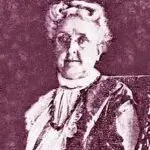Week of May 27, 2018
The Point: Don’t become complacent – maintain vigilance.
Esther Saves the Jews: Esther 8:1-8.
[1] On that day King Ahasuerus gave to Queen Esther the house of Haman, the enemy of the Jews. And Mordecai came before the king, for Esther had told what he was to her. [2] And the king took off his signet ring, which he had taken from Haman, and gave it to Mordecai. And Esther set Mordecai over the house of Haman. [3] Then Esther spoke again to the king. She fell at his feet and wept and pleaded with him to avert the evil plan of Haman the Agagite and the plot that he had devised against the Jews. [4] When the king held out the golden scepter to Esther, [5] Esther rose and stood before the king. And she said, “If it please the king, and if I have found favor in his sight, and if the thing seems right before the king, and I am pleasing in his eyes, let an order be written to revoke the letters devised by Haman the Agagite, the son of Hammedatha, which he wrote to destroy the Jews who are in all the provinces of the king. [6] For how can I bear to see the calamity that is coming to my people? Or how can I bear to see the destruction of my kindred?” [7] Then King Ahasuerus said to Queen Esther and to Mordecai the Jew, “Behold, I have given Esther the house of Haman, and they have hanged him on the gallows, because he intended to lay hands on the Jews. [8] But you may write as you please with regard to the Jews, in the name of the king, and seal it with the king’s ring, for an edict written in the name of the king and sealed with the king’s ring cannot be revoked.” [ESV]
“As we begin chapter 8, many issues have been resolved. The villainous Haman has met his comeuppance – literally, with the aid of his own seventy-five foot pole. Esther and Mordecai also receive their reward at the beginning of Esther 8, in the shape of Haman’s confiscated estate and a promotion for Mordecai [8:1-2]. However, Haman’s edict to exterminate the Jews had not yet been reversed: it was still hanging over their heads like the proverbial sword of Damocles. Perhaps it would yet turn out that the laws of the Medes and the Persians really could not be changed, and all of Esther’s efforts would have been wasted. Much still hangs in the balance at this point in the story. Before we proceed further with the story, though, it is interesting to observe what happened when Esther finally came completely out of the closet about her ethnicity and her relationship to Mordecai. Far from being disturbed by the revelation that Esther was Jewish, the king’s response to the news was to promote Mordecai into Haman’s former positon as vizier over the empire. This fact should make us wonder once again about the wisdom of Esther’s entire chameleon strategy. Not only was it morally dubious for Esther to hide her Jewishness, since it required her to live as a practical pagan for five years, but now it turns out that even pragmatically it may have been a mistake. Perhaps if Esther had revealed her Jewishness and her connection to Mordecai back in chapter 2, the whole threat to the Jewish community might have been circumvented. The king might even have promoted Mordecai to the rank of vizier at that point, after he uncovered the attempt on the king’s life, and Haman might never have risen to power at all. Does that scenario seem far-fetched? If so, remember how odd the connection is between chapters 2 and 3 of the Book of Esther: Mordecai saved the king’s life, the deed was carefully recorded in the royal annals, and the king promoted … (in the very next verse) Haman. Perhaps the idea that Mordecai could have been promoted earlier is not so bizarre as it seems, at least in the thinking of the narrator of the story. Far from bringing about the desired result of safety, then, Esther’s hiddenness may have been what unwittingly opened the door to danger for her whole people. Of course, we are never told what might have been, either in real life or in this story. Certainly God chose to unfold events through precisely this scenario, even through Esther and Mordecai’s sin, so that His redemptive power would become abundantly clear. Whatever may have been the case with Esther, though, it is certainly true that very often we are led into sin because we are afraid of dangers that will never materialize. How often have we failed to bear witness for our faith because of the fear of what others will think, only to discover when we finally timidly open our mouths that the response is not at all what we feared? How many potential dangers and difficulties paralyze us with fright and faithless worry, but then evaporate in front of us like the morning mist? How often are we led into sin by those worries? It is worth reminding ourselves that the sin we think will smooth our path in fact often complicates our lives in unforeseen ways and leads us into even greater difficulties than the ones we feared. The way of the transgressor is not only morally wrong, but frequently it is also far harder than the way of obedience would have been.
Esther’s Second Request. Whatever the “might have beens” in Esther’s case, the reality was that the edict to exterminate the Jews was still in force. King Ahasuerus may have thought that everything had been taken care of with the disposal of Haman, but in fact it hadn’t. So Queen Esther had to go once more before the king to plead for her people’s lives. This time cool, calculating strategy was abandoned as Esther threw herself down in front of the king, weeping and pleading with him to make Haman’s evil plot go away [8:3]. Whereas before she had retained her royal dignity, always appearing as the stately queen before the king, now she threw herself down like a common beggar, crying and asking desperately for mercy for her people. The similarities and differences with Haman in the previous chapter are striking: he fell down before Esther, but his concern was simply to plead for his own life, and he was unsuccessful in his petition [7:8]. Esther fell down before King Ahasuerus to plead not for her own life, but for the lives of her people, and she was granted what she asked. Once again, as in chapter 5, the king stretched out his golden scepter to Esther and received her. This time her request was immediately delivered, without manipulative games. Her words were still carefully chosen, however [8:4-6]. Esther prefaced her request with a long preamble in four parts: If it please the king, and if I have found favor in his sight, and if the thing seems right before the king, and I am pleasing in his eyes [8:5]. Two of these clauses dealt with whether the matter to be discussed was acceptable to the king, while the other two asked whether Esther herself was acceptable. These two themes were inextricably linked, for the only real reason for the king to grant her request was his favor toward her. Esther made no reference to right and wrong, justice and injustice. Those were not categories that registered with the empire. All she could do was to appeal to Ahasuerus’s own self-interest, as it related to her. Her people’s destiny hung upon the king’s response to her personally. If watching her people and kindred being destroyed would cause her great pain, how could anyone who loved her endure that?
Ahasuerus’s Response. King Ahasuerus’s immediate response was less than satisfactory, however [8:7]. The king said, in effect, “Look, I gave you all this money and killed your enemy for scheming against your people. What more could you possibly want?” Ahasuerus assumed that Esther was just like him: concerned only about herself and her own interests. But even though Esther had once concealed her identity because her only thought was to protect herself, now that she had identified with her people, she had a new perspective that stretched beyond her own narrow self-interests. Salvation for herself was not enough if it came without salvation for her people. Seeing that his initial answer was not exactly what Esther was looking for, Ahasuerus went on to tell her that she and Mordecai could write whatever they wanted in the king’s name and seal it with the king’s signet ring, because, after all, the king’s edicts could not be revoked [8:8]. So King Ahasuerus could not undo his former edict because it was irrevocable, but he had no problem with Mordecai and Esther writing a contradictory edict, which would then also become irrevocable. May the best edict win! What is more, even after he had once been manipulated by his top official into signing a deadly edict, Ahasuerus personally encouraged his new vizier to send out another edict, sight unseen. Isn’t that rather silly of him? Of course it is – but that’s the whole point. The empire is so law-bound that it is tied in impenetrable bureaucratic knots, and its emperor cares absolutely nothing about his people. Mordecai had now been granted the power that Haman earlier possessed so that he could counteract Haman’s edict. He didn’t waste any time, but immediately sent out an edict of his own to the 127 provinces of the empire [8:9-14]. Mordecai’s language deliberately echoed that of the original edict in order to highlight their parallel nature. The main difference is that these messages were not only committed to couriers, but to couriers riding on specially bred fast horses; the message must get through in time, even to the most distant parts of the empire. What Mordecai’s edict mandated was measure-for-measure retaliation by the Jews against their enemies. They could kill those who attacked them, along with their families, and then plunder them, just as their enemies had planned to kill the Jews and their families and take their plunder. This was not merely self-defense, but neither was it a license for indiscriminate slaughter: the verb used in verse 13 to describe the action for which the Jews are to be prepared is naqam (take vengeance), which always indicates punitive retribution for a prior wrong. Those who, like Haman, sought to destroy the seed of the Jews, in accordance with his edict, would themselves share Haman’s fate. The authority of the empire now backed up the threats of the Abrahamic covenant against those who sought to harm the descendants of Abraham. However, it was the Jews themselves who would have to carry out the sanctions of the covenant in a kind of holy war against their enemies.” [Duguid, pp. 98-106].
The Feast of Purim: Esther 9:20-28.
[20] And Mordecai recorded these things and sent letters to all the Jews who were in all the provinces of King Ahasuerus, both near and far, [21] obliging them to keep the fourteenth day of the month Adar and also the fifteenth day of the same, year by year, [22] as the days on which the Jews got relief from their enemies, and as the month that had been turned for them from sorrow into gladness and from mourning into a holiday; that they should make them days of feasting and gladness, days for sending gifts of food to one another and gifts to the poor. [23] So the Jews accepted what they had started to do, and what Mordecai had written to them. [24] For Haman the Agagite, the son of Hammedatha, the enemy of all the Jews, had plotted against the Jews to destroy them, and had cast Pur (that is, cast lots), to crush and to destroy them. [25] But when it came before the king, he gave orders in writing that his evil plan that he had devised against the Jews should return on his own head, and that he and his sons should be hanged on the gallows. [26] Therefore they called these days Purim, after the term Pur. Therefore, because of all that was written in this letter, and of what they had faced in this matter, and of what had happened to them, [27] the Jews firmly obligated themselves and their offspring and all who joined them, that without fail they would keep these two days according to what was written and at the time appointed every year, [28] that these days should be remembered and kept throughout every generation, in every clan, province, and city, and that these days of Purim should never fall into disuse among the Jews, nor should the commemoration of these days cease among their descendants. [ESV]
“Original Meaning. With this chapter the author returns his original readers to their own time, many years after the events in Persia had happened. Purim was becoming an annual celebration on the Jewish calendar. The author tells the story of Esther and Mordecai to say, “See, this is why we celebrate Purim as we do!” He explains that Mordecai recorded these things and sent letters to all the Jews obliging the Jews to celebrate annually so that future generations could commemorate the momentous deliverance of their ancestors that permitted each successive generation to exist [9:20-22]. It is fitting that the fulfillment of God’s promise to the Jews in Persia should also be written down and commemorated. When the Lord promised to wipe out the memory of the Amalekites, He told Moses to write it down on a scroll as something to be remembered [Ex. 17:14]. This gave the promise both divine authority and perpetuity. The events of the Esther story show a fulfillment of this promise many centuries later and far away from the place it was made, illustrating the efficacy of God’s Word. The authority on which Purim is based is unlike that of the feasts commanded by Moses in the Pentateuch. Mordecai was not a prophet or a miracle worker, nor did he rule as king in Jerusalem. He wore the signet ring of a Persian king, not the ephod of the high priest. Mordecai simply wrote letters to the Jews throughout Persia describing the remarkable events that had transpired in the palace at Susa, leading to the deliverance, and the people then responded collectively to their shared experience [9:27-28]. The celebration of Purim is therefore different from the feasts prescribed by the Torah. Rather than being imposed on the people from above as God’s commandment, Purim began as the spontaneous response of God’s people to His omnipotent faithfulness to the promises of the covenant. In explaining the origin of the holiday, the author of Esther also explains the origin of its name, Purim [9:26]. It is derived from the word Pur, which was not originally a Hebrew word. Pur refers to the “lot” or “die” that Haman cast in divination to determine the day of death for the Jewish race. This word occurs in the Old Testament only in the book of Esther and came into the Hebrew language as a loanword during the Persian period, with the Hebrew plural suffix “im” added. The first time this foreign word is used [3:7], and again in 9:24, the author of Esther translates it into its Hebrew equivalent, goral, which is rendered “lots.” This implies that when the book of Esther was written, the author did not expect his readers to be familiar with the origin and meaning of either Pur or Purim. Even though the word Pur and its plural form Purim occur only in the book of Esther, the equivalent Hebrew word, goral, occurs frequently throughout the Old Testament. Note, for example, Proverbs 16:33: The lot is cast into the lap, but its every decision is from the Lord. In ancient times, the goral was the means used for divination to determine the will of the gods. When Haman cast lots, he was seeking guidance from the gods. Ancient Israel also used this method to seek Yahweh’s will. The name of the feast, Purim, is a double entendre, signifying that the lot, or destiny, of God’s people would not be determined by Haman’s casting of lots before his gods. Only Yahweh determines the roll of the lot, and only Yahweh determines the lot of His people. Bridging Contexts. Purim continues to be celebrated by the Jewish people around the world today. For them the significance of the holiday and the book on which it is based have continued in unbroken tradition from generation to generation. However, the Holocaust has for many Jews all but extinguished its joy. The book of Esther was treasured by Jews imprisoned in the Nazi death camps precisely because it promised the survival of their race despite Hitler’s attempts to annihilate them. The hope of those who died in the death camps was realized. The Jewish people did survive, yet ironically many Jews of the subsequent generations have found it difficult to believe that God’s presence and power are manifested in history as they grapple with the theological implications of Auschwitz. Like the group of Jews in Auschwitz who put God on trial, found Him inexcusably guilty and worthy of death, but still went to evening prayer, Jews continue to celebrate the significance of Purim year after year. This indictment of God is poignant, for when God did come into the world two thousand years ago, He was put on trial, judged guilty and worthy of death by human reasoning, and executed. The divine Messiah of the Jews took up the moral agony of Auschwitz and every other atrocity ever perpetrated against the human race. He agreed that God had to do something about such unimaginable evil and was willing to take it on Himself so it could be destroyed on Calvary. Where is the evidence of His achievement? In Jesus’ resurrection, which empties physical death of its power over everyone who takes refuge in Him as the Messiah. The mortal has been clothed with immortality. Death has been emptied of its horror and swallowed up in victory [1 Cor. 15:54-55]. After the death and resurrection of Jesus Christ, the significance of Purim as a celebration of the power and presence of God extends beyond the boundaries of human history. The covenant promise that was expressed before Christ in the protection and survival of God’s chosen nation is reexpressed after Christ’s resurrection as protection and survival of the body of Christ (His church). God promises those who are in Christ not only protection and survival collectively as a people throughout the generations of human history, but individually after physical death and after the last day of history.” [Jobes, pp. 212-221].
Questions for Discussion:
- Chapter 8 brings us to the conclusion of Esther’s plan to save her people. But one great stumbling block remains. What is it? How do Esther and Mordecai resolve this final difficulty in order to save the Jewish people?
- Why was the feast of Purim originally celebrated? Why was it called “Purim”? How is the celebration of Purim different from the feasts prescribed by the Torah? As the Feast of Purim is described in Esther 9:20-32, what is left out that all the other feasts have? What do you think the author of Esther is trying to tell his readers in describing the inauguration of this feast?
- This ends our six week study of Esther. What have you learned from this study? What do you think the main purpose of this book is? What encouragement do you receive from this study concerning who God is and how He acts in His people’s lives?
References:
Ezra, Nehemiah, Esther, Mervin Breneman, NAC, B & H Publishers.
Esther & Ruth, Iain Duguid, REC, P & R Publishing.
Esther, Karen Jobes, Zondervan.

















